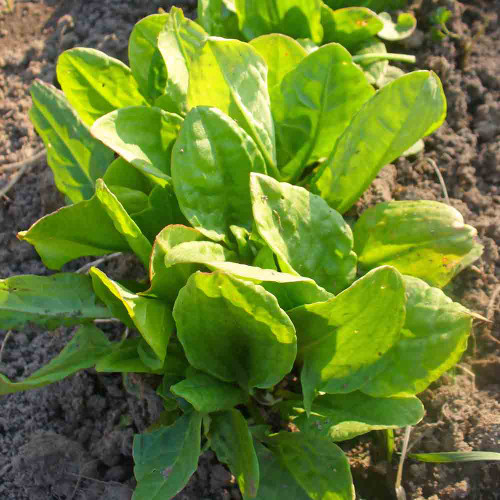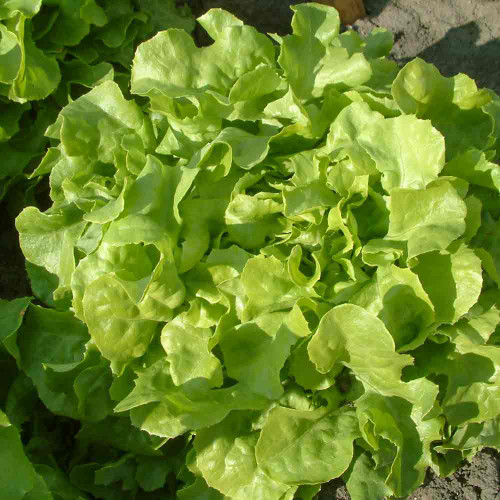Description
Par-Cel Leaf Celery - A Bolder, Brighter Celery Flavor Without the Fuss
Par-Cel or leaf celery has a delicate, parsley-like appearance that conceals a powerful and complex flavor profile. The taste is bold and assertive, far more potent than regular celery, and matures as the plant grows; younger inner leaves offer a pleasing, rich celery taste perfect for fresh use, while the mature outer leaves develop a "double-strong" celery-parsley flavor that holds up beautifully in cooked dishes.
One of its best traits is how this excellent flavor holds strong throughout the season, resisting the bitterness that is so common in other greens during the summer heat. This is because this highly efficient producer grows less like a fussy vegetable and more like a resilient, powerhouse herb.
Details
This herb is directly linked to ancestral celery, offering a delicious contrast to its modern stalk relatives. It grows in a vigorous, bushy clump of dark green foliage that resembles large, flat-leaf parsley. Instead of producing thick, watery stalks, it creates an abundance of slender, crisp, hollow stems and intensely aromatic leaves. As a "cut-and-come-again" plant, you can harvest from it continuously throughout the season. The plant's many names tell its story: known as Cutting Celery or Soup Celery for its purpose, and in Europe as Italian 'Verde da Taglio' ("green for cutting") or the historic Dutch name 'Zwolsche Krul' ("Zwolle Curled").
The advantages for the home gardener are significant. Its compact, bushy habit makes it an ideal choice for container gardening and small spaces, solving the problem for those with challenging clay or rocky soil where stalk celery often fails. Furthermore, Par-Cel showcases remarkable resilience, tolerating a range of conditions from summer heat once established to significant cold, often overwintering in temperate climates down to 10°F.
History
The story of Par-Cel as a living artifact begins with its wild ancestor, a pungent Mediterranean herb known as "smallage" that was valued more for medicine and ceremony than for food. The ancient Greeks used its leaves to crown athletes, it was mentioned in the epic poems of Homer's Iliad and Odyssey, and the Egyptians included it in the funerary garlands of Pharaoh Tutankhamun. It wasn’t until the 17th century that European gardeners began selecting for sweeter, milder stalks, leading to the celery we know today.
However, the specific story of Par-Cel begins in 18th-century Holland, where it was cultivated as the distinct heirloom 'Zwolsche Krul'. This name ties the plant to the city of Zwolle in the Netherlands and perfectly describes its curly foliage. Prized for its intensely flavorful leaves, it offers the taste of celery as it was originally enjoyed: as a potent herb, a stark contrast to the familiar, mild Pascal-type stalk celery. It is suggested that German settlers were instrumental in spreading this variety, carrying the leaf celery they knew from nearby Holland in their travels.
Uses
Par-Cel is a distinct and versatile culinary herb for your kitchen, not just a substitute for stalk celery. The tender young leaves are superb when minced and used raw as a garnish or in salads, providing a bright, peppery kick. The stronger-flavored mature leaves and stalks are ideal for cooking; they infuse soups, stews, stocks, and savory pies with a robust celery depth. The entire plant can also be dried, yielding a potent herb for winter seasoning. In its second year, the seeds can be harvested to create a fragrant, homemade celery salt, allowing you to use the whole plant through its entire life cycle.
Companion Planting
Par-Cel's strong scent is known to repel the cabbage white butterfly, making it a valuable neighbor for all members of the Brassica family, including cabbage, broccoli, and kale. It also grows well alongside other garden staples like leeks, tomatoes, and bush beans. I
It is generally advised to avoid planting it directly next to corn, potatoes, or its close relative, parsnip, to avoid shared pests or resource competition.
Planting and Growing Tips
While Par-Cel asks for a little patience during its slow germination, it rewards that initial care with a season of robust, low-maintenance resilience once established in your garden.
Because the seeds are slow to germinate and require light, it is highly recommended to start them indoors 8 to 12 weeks before your last frost date. Sow the seeds on the surface of a moist seed-starting mix and do not cover them. Bottom-watering the tray is the best method to avoid dislodging the seeds. A heat mat maintaining a soil temperature between 60°F and 75°F will greatly improve your success.
After all danger of frost has passed, transplant your hardened-off seedlings into a location with full sun or partial shade, spacing them 6 to 12 inches apart. In hotter climates, a spot with afternoon shade is beneficial. Par-Cel is a heavy feeder and thrives in fertile, well-drained soil with consistent moisture, so amend your soil with compost and apply a layer of mulch to help retain water.
Fall Planting
The most reliable method for a strong fall crop is to start seeds indoors 12-15 weeks before your first fall frost, usually from late June to mid-July. This extended indoor growing period ensures the plants are vigorous and well-established before being transplanted as summer begins to wind down. Try to transplant into a location that receives some partial shade to protect young plants from the hottest afternoon sun as they establish. In many temperate climates (USDA Zones 6-8), you can continue to harvest leaves throughout the fall and into the early winter. If you grow Par-Cel in containers, you can simply move the pots to a sheltered location like an unheated garage or cold frame to extend the harvest season even further.
Harvesting Tips
You can begin harvesting once the plant is well-established, typically about four weeks after transplanting. Use a "cut-and-come-again" method by snipping the outer stalks near the base of the plant. This will encourage the plant to continuously produce new, tender growth from its center, providing you with a steady supply for months. Remember to harvest the younger, inner leaves for fresh eating and the more robust, older leaves for cooking.
Par-Cel dries exceptionally well, yielding a potent herb that lasts far beyond the fresh season. To dry, hang bunches of stalks upside down in a dark, cool, well-ventilated area until brittle, then crumble and store in an airtight container. For a fresher flavor, leaves can be finely chopped, mixed with a small amount of water or oil, and frozen in ice cube trays for dropping directly into soups and stews.
Learn More
From the soil to the seed to the food you eat - we'll help you grow your best garden!
4 Reviews
-
Excellent choice for hot climates.
This is a durable biennial plant for the southern gardener. It endures temps in excess of 100 degrees and wilts lightly with freezing temps only to rebound. Delightful celery flavor that is good fresh or dried.
-
Well worth growing
This is great for containers, and is usable in salads, and cooking. It holds up well in hot weather. The leaf is not curly, and is very similar to flat leaf parsley.
-
By far the best
Grew this variety for some years, but the seed became hard to find and we tried other varieties of leaf celery. This is the only one that thrived in our sometimes crazy Ozark climate and that also had the rich flavor we prized. So glad to see that Terroir Seeds is carrying it.
-
Distinct celery taste!
Germination and growth were good. Leaves had a distinct celery taste. We planted one half of a bed with it and the other half with Utah bunch celery. The Utah went to seed while Par-Cel continued to produce some good leaves. A nice alternative to bunch celery. Over all did well in this area.

















